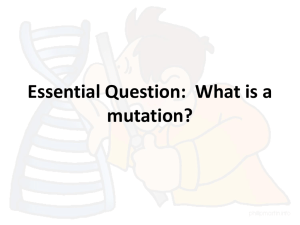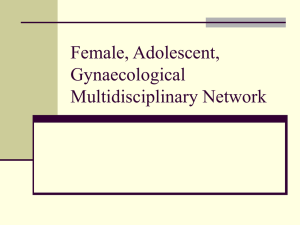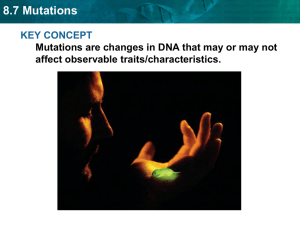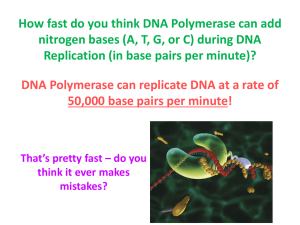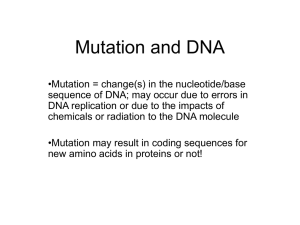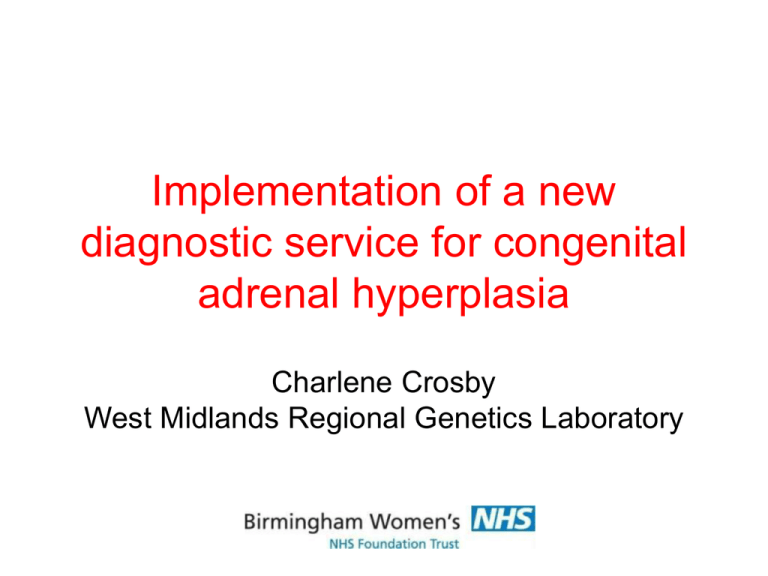
Implementation of a new
diagnostic service for congenital
adrenal hyperplasia
Charlene Crosby
West Midlands Regional Genetics Laboratory
Congenital Adrenal Hyperplasia
• Classic congenital adrenal hyperplasia (CAH) is an
autosomal recessive disorder with an incidence of 1 in
7,000-15,000
• Non-classic CAH is less severe and effects 1 in 5001000 individuals
• 90-95% of cases are caused by deficiency of 21hydroxylase, which catalyses the synthesis of cortisol
and aldosterone from cholesterol
Cholesterol
Pregnenolone
17-hydroxypregnenolone
Dehydroeplandrosterone
(DHEA)
Progesterone
17hydroxyprogesterone
21-hydroxylase
Deoxycorticosterone
Corticosterone
Aldosterone
Androstenedione
(17-OHP)
21-hydroxylase
11-deoxycortisol
Cortisol
Testosterone
Clinical Presentation
• Clinical severity depends on degree of 21hydroxylase deficiency
– Good genotype phenotype correlations
• Classical CAH
– Simple Virilsing: Ambiguous genitalia in females
– Salt Wasting: Dehydration, vomiting and diarrhoea. If untreated
can prove fatal
• Non-classical CAH
– Milder than classical CAH
– Androgen excess can cause precocious puberty in either sex
– Males are often undiagnosed/asymptomatic
Treatment
• Glucocorticoids which suppress ACTH, are used to
reduce the levels of adrenal sex steroids in the blood
• Individuals with salt wasting CAH also require
mineralcorticoids and sodium chloride supplements
• Surgery on virilised females
• Growth monitoring to detect over and under treatment
• Dexamethosone can be used to prevent/reduce prenatal
virilisation. Side effects for the mother include weight
gain, irritability and oedema
The 21-Hydroxylase Gene
C4A
CYP21P
C4B
CYP21
• The 21-hydroxylase (CYP21) gene and its pseudogene
(CYP21P) are located at 6p21.3
• Analysis of CYP21 is complicated due to the high
sequence homology between CYP21 and CYP21P
• 95% of mutations are generated by recombination
– 20% deletions
– 75% point mutations
Strategy
• Common strategies used to test for CAH diagnostically
– ARMS PCR or sequencing
– MLPA or Southern blotting
• A mini-sequencing method using the ABI Prism
SNaPshot multiplex kit was validated to detect the
common CYP21 point mutations (27 positive controls)
• MLPA used to detect deletions/gene conversions (30
positive controls)
• Together, these two techniques will detect 90-95% of
mutations in CYP21 which lead to CAH
Mini-Sequencing
• Mutation specific primer anneals directly adjacent to
the mutation being investigated
• Single base extension occurs with the addition of the
complementary dye-labelled ddNTP
• Primers are synthetically elongated with polyT tracts of
different lengths
– Products range from 18 to 91 nucleotides in size
• Wild type and mutant alleles slightly differ in size due to
the different molecular weights of the dyes
Mini-Sequencing Protocol
Amplify Genomic DNA
Remove dNTPs and Primers
SNaPshot Reaction
Remove Unincorporated ddNTPs
Electrophoresis
Data Analysed on GeneMapper Software v4.0
Mini-Sequencing
NC
I2G G/G
*
*
I172N A/A
I2G G/A
*
NC
I2G A/C/G
*
I2G
Q318X C/T
Neg
*
Q318X
Sequencing
∆8bp
P30L
I236N V281L
Q318X
V237E
R356W
F306+T
M239K
I172N
I2G
1
2
3
4
5
6
7
8
P453S
9
10
• The common point mutations are amplified in four nested
PCRs from the primary 3 Kb PCR fragment
• Alternatively, the CYP21 gene can be amplified in two
fragments followed by five nested PCRs
I172N A/A
P453S T/T
MLPA
LTA
C4A
CYP21P
C4B
CYP21
TNXA
1 probe
1 probe
3 probes
1
Promoter (pseudogenic
promoter reduces
transcription)
TNXB
1 probe 1 probe
2
3
Exon 3 (8bp
deletion in
pseudogene)
5 probes
4
5
Exon 4 (I172N
missense mutation
in pseudogene)
6
CREBL1
1 probe
7
8
Exon 6 (I236N ex6
cluster mutation in
pseudogene)
1 probe
9
10
Exon 8 (Q318X
nonsense mutation
in pseudogene)
MLPA
CAH 1
0.91
1.09
1.12
1.16
0.00
0.00
1.76
0.63
0.60
0.00
0.69
0.56
CAH 3
0.92
1.08
1.06
1.01
0.00
0.00
1.72
0.54
0.55
0.00
0.66
0.52
CAH 4
1.00
1.00
1.03
1.02
0.04
0.06
2.13
0.54
0.59
0.09
1.10
0.58
CAH 6
1.06
0.94
0.99
0.95
0.00
0.00
1.49
0.51
0.50
0.00
1.13
0.48
CAH 8
1.05
0.95
0.92
0.92
0.92
0.45
1.39
0.84
0.98
0.15
1.17
0.79
Hom del
Het del
Dup
Results & Discussion
• Using mini-sequencing and MLPA, all mutations in the
controls were correctly identified
– one additional mutation was detected
• Identification of pathogenic CYP21 mutations in cis
– highlights the importance of determining phase when two
heterozygous point mutations are detected
• Currently conventional sequencing and MLPA are being
used for mutation detection
• Testing for the ten common point mutations and
deletions will detect 90-95% of mutations which cause
21-hydroxylase deficiency
Acknowledgements
• University of Birmingham
– Dr Nils Krone
• Manchester Regional Genetics Service
– Helene Schlect
– Simon Tobi
• Yorkshire Regional Genetics Service
– Ian Berry
• West Midlands Regional Genetics Laboratory
–
–
–
–
Yvonne Wallis
Fiona Macdonald
Jennie Bell
Richard Barber





